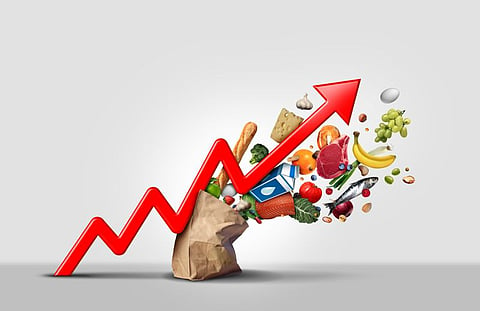How Israel-Iran conflict can hike global food, fuel and household item prices
Tensions at Strait of Hormuz could trigger fresh inflation, delaying rate cuts globally

Dubai: As tensions escalate between Israel and Iran—now with direct US involvement—economists warn that ripple effects could soon show up in everyday spending worldwide. From groceries to utility bills, the cost of household essentials could inch higher in the weeks ahead.
While this doesn’t guarantee a price surge everywhere, the risks are rising. And for countries closely linked to global oil flows—like those in Asia and the Middle East—the stakes are especially high.
Why it matters: Oil affects everything
At the centre of the global concern is oil. And not just because it's what fuels cars or airplanes. Oil is embedded in the production, packaging, and transportation of nearly every product we consume—from food and clothes to electronics and medicine.
When oil prices rise, those extra costs tend to travel through the supply chain, ending up in supermarket aisles and monthly electricity bills.
Currently, the Strait of Hormuz—a narrow waterway through which nearly 20% of the world’s oil passes—is in the spotlight. Iran has signaled a potential move to block or restrict shipping through this critical chokepoint. If it follows through, energy analysts say it would trigger an immediate supply shock.
What happens if oil hits $100 again?
Oil prices are already climbing, and analysts believe a blockade or military escalation could push crude well above $100 per barrel.
“Inflation could increase by about 0.4 to 0.5 percentage points if Brent rises to $90, and by as much as 1.3 points if it hits $140,” said analysts at ABN AMRO Economics Bureau. While oil prices aren’t as restrictive as they used to be, “this kind of shock would certainly raise petrol prices and inflation expectations globally.”
This, in turn, could have far-reaching effects. Countries that rely heavily on imported fuel—like India, Indonesia, and much of Southeast Asia—may face delays and higher shipping costs for basic goods, leading to higher prices for consumers.
How UAE shoppers can feel the pinch
While UAE enforces strict cost controls to keep prices in check, how shoppers can feel global price changes is through imported goods or travel-related expenses. Even a small uptick in international transport costs can raise the price tags on essentials—especially in a trade-dependent economy.
“Persistently high oil prices could stall expected interest-rate cuts by the Federal Reserve and European Central Bank, prolonging market volatility,” said Saxo Bank analysts in a recent outlook. “This would maintain higher borrowing costs for longer and raise the price of capital-intensive goods.”
In simpler terms, everything from bank loans to electronics could get a little more expensive to buy or finance.
Global inflation pressure on GCC
This isn’t the first time geopolitical tensions have rocked the oil market. Past conflicts caused oil prices to spike temporarily. But the current situation is different in scale and severity.
“This is not a proxy battle involving militias. It’s a direct military strike between sovereign nations,” analysts say. “And one of them controls the world’s most important oil corridor.”
Even without a full shutdown of the Strait of Hormuz, the mere threat of it keeps oil markets jittery—and that’s enough to push prices up.
Central banks to stay cautious?
Just weeks ago, many were hoping for interest rate cuts this year as inflation cooled. But with rising oil prices adding new inflation risks, central banks may hold off.
“We now see the U.S. Federal Reserve holding rates until Q2 2026,” ABN AMRO analysts note, “due to a mix of rising inflation and a still-stable labor market. An oil shock will only reinforce this path.”
In Europe, the economic fallout could be even more pronounced. Eurozone countries, still recovering from a recent energy crisis, remain net importers of oil.
“In the $90 oil scenario, the European Central Bank may pause rate cuts. If prices surge to $140, we may even see temporary rate hikes,” the analysts warned.
What to watch next
Several key signals will determine how the conflict impacts global markets and your wallet:
Strait of Hormuz: Any real disruption here could cause oil to spike $10 or more overnight.
Retaliation: Escalating attacks, especially on oil infrastructure, could amplify the crisis.
Central bank moves: The longer oil stays above $85, the harder it is for rates to come down.
Supply chain slowdowns: Especially in Asia, where dependency on Gulf oil is highest.
Final word: World inflation’s second act?
Oil is more than a commodity—it’s the fuel of the global economy. Even short-term spikes can ripple into lasting price increases for the average consumer.
While markets may stabilise if the conflict de-escalates, the risk remains real. For now, rising energy costs are once again front and centre—and your grocery bill, travel plans, or utility expenses might start to reflect that.
Sign up for the Daily Briefing
Get the latest news and updates straight to your inbox




